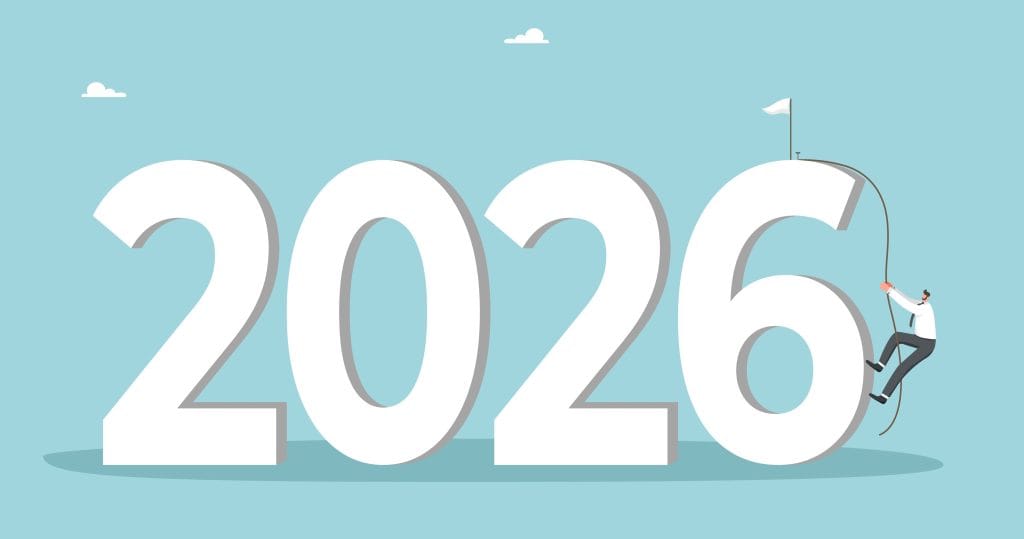Last updated on November 28th, 2025 at 06:58 pm
Last updated on November 12th, 2025 at 03:45 pm
 Several states have begun Phase 1 of reopening—meaning that dental offices are allowed to resume elective procedures—with many other states and a few Canadian provinces looking to reopen soon as well.
Several states have begun Phase 1 of reopening—meaning that dental offices are allowed to resume elective procedures—with many other states and a few Canadian provinces looking to reopen soon as well.
With the proverbial “rubber about to hit the road,” you need a plan in place to ensure that when you do reopen, your office is as productive and efficient as possible to make up for lost ground.
Part of any plan has to be HOW you repopulate your schedule. And you want to be smart about the way you do this to avoid:
- Having only a trickle of patients coming in with tons of openings,
- Having too many appointments crammed into the schedule, making it a disorganized mess, (and putting yourself at risk to avoid new guidance in post-COVID-19 world), or
- Ending up with patients missing out on treatment because you couldn’t see them during the stay-at-home period and now it’s “forgotten about.”
We also want to plan not just to cope with schedule as you reopen but set yourself up to keep growing into the future.
The time to set yourself up to THRIVE going forward is NOW.
(Related: Patient Reactivation: How to Successfully Get Overdue Patients Back on the Hygiene Schedule)
To that end we created a “Reopening Action Checklist” for our clients laying out the steps they should take to ensure they reopen successfully. Since everyone could use some help right now, we decided to make it publicly available to all dentists. So, you’re welcome to download it. Note, this checklist ONLY applies if you are allowed to see elective procedures again, or have a “hard” date within the next two weeks where this is imminent. If this is not the case, you can download our “Action Checklist” for Practices that are limited to only seeing emergencies.
With that said, here are some tips specifically for scheduling your patients during Phase 1 of reopening. Again—these steps only apply if you’ve been authorized to resume elective procedures.
1. Let ALL your patients know that you are open again!
 Use email, mail, texts, social media, or any means you have of reaching your patients to let them know that you’re open and able to deliver regular dental procedures again.
Use email, mail, texts, social media, or any means you have of reaching your patients to let them know that you’re open and able to deliver regular dental procedures again.
It’s no use being open if nobody knows you are. Don’t assume that patients will magically figure it out on their own.
You may want to include some information that it’s been deemed safe for dental offices to see patients for regular procedures (no longer limited to only emergency care) and share some of the safety precautions you are taking.
One quick note: don’t make it sound like you’re just starting to take hygiene/sterilization measures now (implying that you weren’t before). You are a healthcare provider and have of course always had very high hygiene standards to prevent the spread of disease. But you can let them know about the extra precautions you’re taking in light of the coronavirus, i.e. extra PPE, limiting number of people in the office, social distancing, check in from the car, etc., then let your patients know about it.
(Related: My Schedule is Empty. What Do I Do?)
2. Call your patients whose appointments were cancelled or delayed over the last 1-2 months (on the doctor’s or hygienist’s schedule).
Get them scheduled to come in now that your office is open again. Let them know what to expect when they come in. Most likely you have made some changes in your office to take precautions against COVID-19 and to comply with your state or province’s guidelines. So, make these patients aware of these new procedures before coming into the office.
3. If any patients aren’t comfortable coming in yet, find out when they are comfortable scheduling for and put them down for an appointment then.
 Some people may not be comfortable coming into the office yet. That’s fine (unless of course there is an active infection or condition that requires them to be treated sooner). But DO schedule them now while you have them on the phone.
Some people may not be comfortable coming into the office yet. That’s fine (unless of course there is an active infection or condition that requires them to be treated sooner). But DO schedule them now while you have them on the phone.
Ask them when they would be comfortable coming (perhaps in June or July or even November or later) and schedule them for that time.
Don’t leave it open and figure you’ll call them back later. Get them on the schedule and then if anything changes you can always reschedule later. If you don’t put them on the schedule, then patients will inevitably fall through the cracks and you won’t get them back in.
4. Reach out to your patients that are currently scheduled for visits in May or June.
These patients may not know that you’re open—so don’t just assume that they’ll be coming in. Give them a call now to let them know you’re open and confirm them for their appointment.
Normally, you may confirm patients a day, or a few days, ahead of the appointment. But due to current circumstances, I’d start calling much earlier than that.
(Related: 3 Easy Steps to Boost Productivity in Your Schedule)
If lots of patients are going to cancel, I’d much rather know 2-3 weeks ahead of time so my team can start filling that time with patients who do want to come in. We’ve got a lot of missed production to make up for, so we can’t have lots of last-minute cancellations/no-shows right now.
Again, if they’re not comfortable coming into the practice yet, find out when they are comfortable scheduling for and get them on the schedule.
5. Consult your state’s guidelines for infection control, PPE, etc.
As much as we’d love to lay out all the procedures your practice should adopt for seeing patients, which procedures you should or shouldn’t do right now, PPE, and so on…unfortunately it’s so different from state to state that we can’t do that here. So, don’t get all your advice from a national source—go through your state (or provincial) guidelines and figure out how to implement them in your office.
6. Make sure your front office staff know how to answer any questions patients may have.
 Make a list of questions or concerns that patients may have regarding scheduling or coming into the office. And then whoever is calling to schedule/confirm patients or answering the phone should understand them well.
Make a list of questions or concerns that patients may have regarding scheduling or coming into the office. And then whoever is calling to schedule/confirm patients or answering the phone should understand them well.
“Is it safe to do dentistry?” “Are we allowed to go to the dentist right now?” “Is it okay to get a cleaning?” “I live with an elderly relative, what should I do?”
I’d recommend printing out a sheet with suggested responses and give it to all the staff.
(Related: How to Create First-Class Customer Service in a Dental Office)
7. Build extra time into the schedule between appointments for any new requirements (disinfecting, PPE, etc.).
With extra precautions being taken, you’ll want to put an extra pad between each patient for sterilization measures. I would just have your Scheduling Coordinator insert 5 or 10 minutes between each appointment.
If your schedule is already full with patients scheduled back-to-back, your Scheduling Coordinator may need to move things around a bit and reach out to any patients whose appointment times are affected.
This, and the backlog of patients you haven’t seen may mean you may want to extend your work hours temporarily to see everybody—and this is ultimately up to you, but I would be happy to do it right now to make up for lost time. Key point though—have a time these extended hours END. You don’t want someone scheduling their next hygiene appointment 6 months from now with these extended hours…
8. Adjust your schedule to accommodate any new processes you’ve adopted to comply with your state or province’s requirements.
The requirements you have for reopening can affect numerous aspects of your practice—from PPE, to how many patients (if any) can be in your waiting room, where your staff sit at the front desk to how you might schedule appointments, etc. And these requirements vary by where you are located.
So as a first order of business:
- Make sure you are completely familiar with these requirements for your locale (as in #5 above), then
- Work out what changes you need to make in your practice, and then
- Ensure your staff are fully familiar with and understand these new processes.
- With special attention to your schedule, work out how this will affect your normal scheduling policy. Document these changes and make sure that anyone scheduling fully understands them. Despite these new requirements, you still want to provide excellent customer service with little to no wait time. So, work to plan all of this out, ensure the team is onboard and fill your schedule according to these new guidelines.
- Evaluate your schedule in “real-time” as you go—this is something the Office Manager is going to want to keep an eye on—to make any necessary adjustments.
9. Make sure you have enough time on the schedule to present treatment and do consults.
This may actually be the most important point in this blog post.
A lot of patients are waiting to get in and you’ve missed out on a lot of production over the last 1-2 months, so it’s very tempting to dive back in and do as much as you can.
Doing so without also building time into the schedule to present treatment can become counterproductive in the long run.
If you don’t have time to communicate with patients, explain their diagnosis and treatment plan fully, and answer concerns or objections they may have—you’re going to pay for this with lower production in the future. Case acceptance will suffer (as well as the patients’ health) because you won’t have time to present the comprehensive treatment your patients may need.
You can only produce what patients accept. So, don’t cut short your case presentations because you’re trying to fit in a gazillion appointments and make up for a backlog.
Communication and case acceptance are one of our specialties, so if you’d like to learn more about how you can improve case acceptance, attend our free live-stream seminar, The Effective Case Acceptance Seminar.
Put an extra focus on communication and case acceptance right now.
We’re here to help you get your practice back to being super-productive.
If you need anything at all, you can reach us any time at (800) 640-1140 to do a Practice Recovery Analysis with an MGE specialist. And it’s never been easier to attend one of our seminars, because we are currently live-streaming them all online! See our upcoming live-stream seminars.
I hope these tips help!



Thank you for this awesome article. Do you by any chance have a sample of the letter to patients?
Hi Goli, we don’t have one for distribution, but if you’re a member of the MGE client Facebook Group, I think that a few have been shared around. To join, go to https://www.facebook.com/groups/534951880542987. Best, the MGE Team